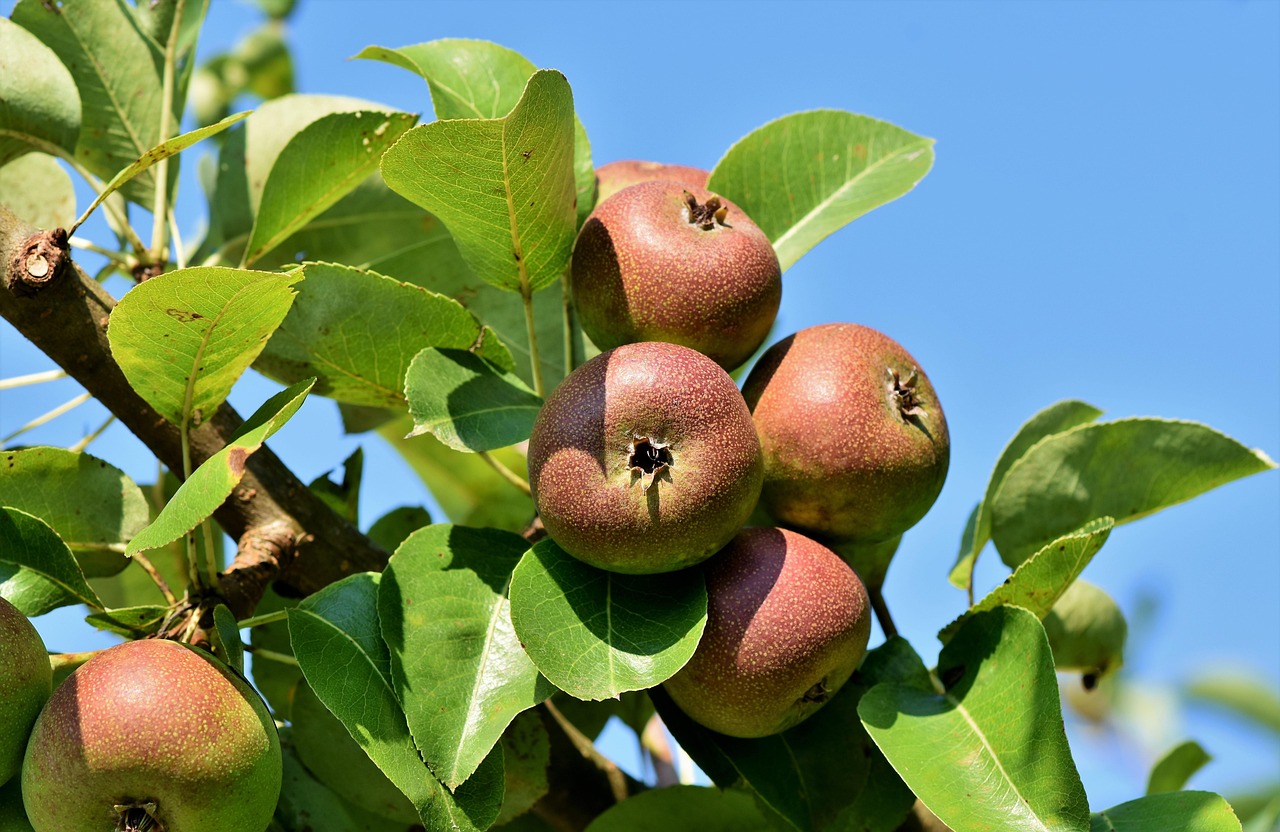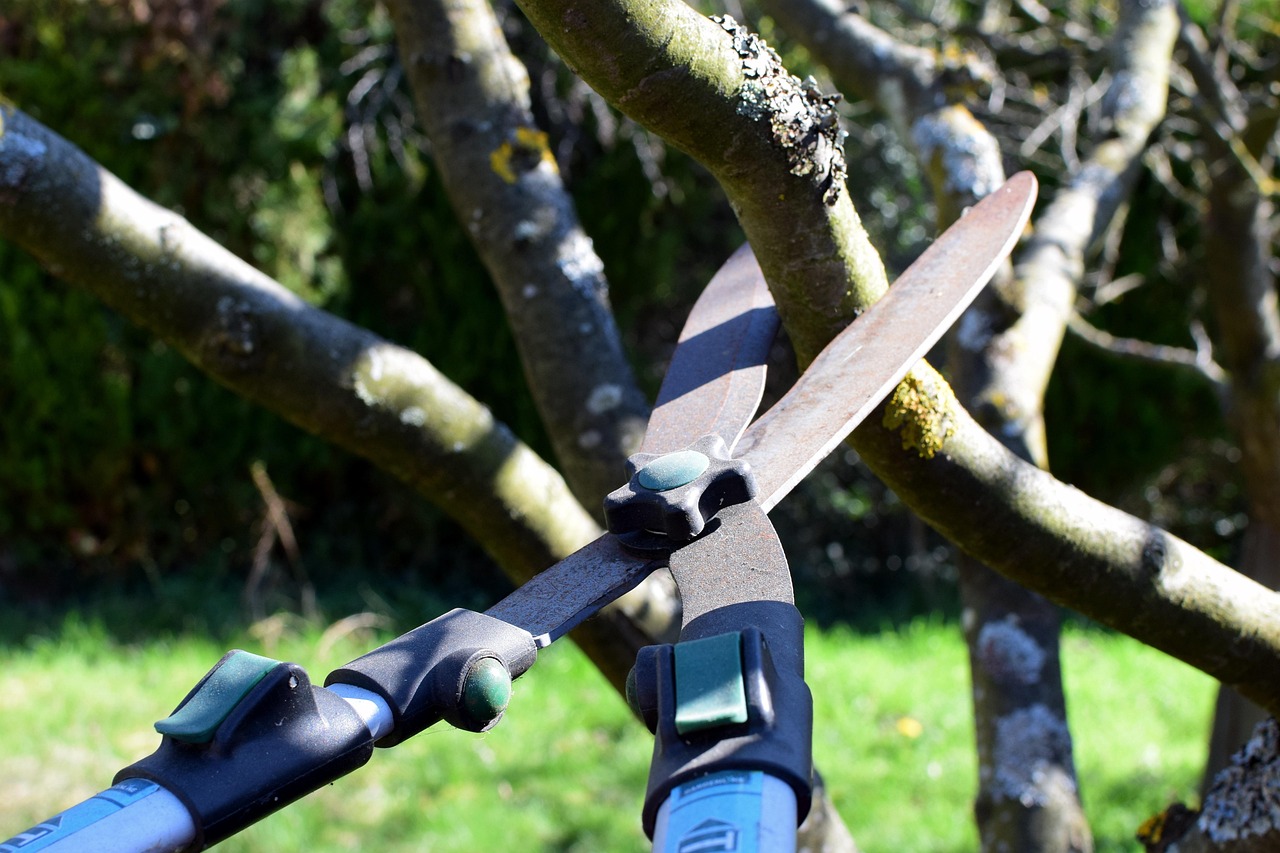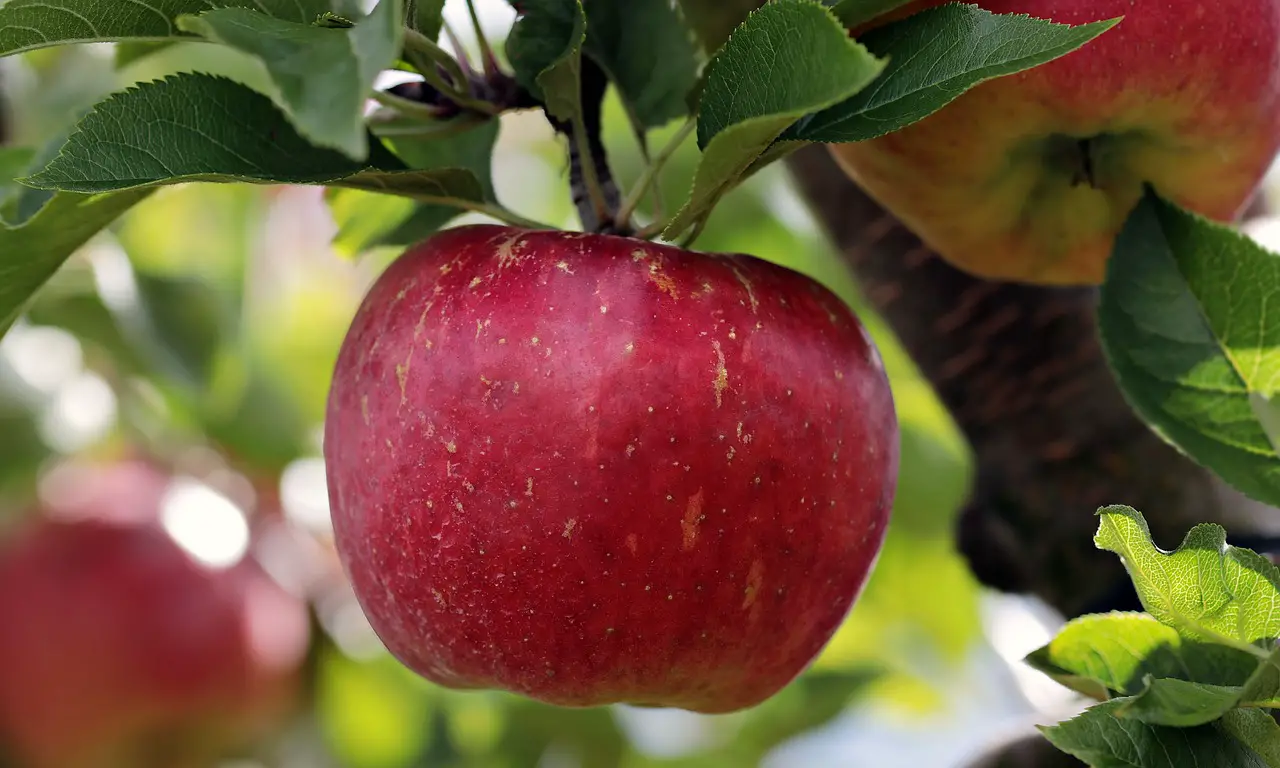Pruning young apple trees is essential for their healthy growth. Start by removing dead or damaged branches. Focus on shaping the tree to ensure good air circulation and sunlight penetration. Regular pruning leads to better fruit production and overall tree health.
Apple trees, like many fruit-bearing plants, require careful attention during their early years. Proper pruning can make a significant difference in how well these trees develop. Young apple trees are still establishing their structure, making it an ideal time to guide their growth. By pruning at the right times and in the right ways, gardeners can enhance their trees’ health and productivity.

Pruning not only helps in shaping the tree but also encourages stronger growth. When done correctly, it reduces the risk of disease and pest infestations. Additionally, well-pruned trees are easier to manage and harvest. This article will provide essential tips for pruning young apple trees effectively.
Understanding the Basics of Pruning
Before diving into specific techniques, it is important to understand why pruning is necessary. Pruning helps maintain the tree’s shape and promotes better air flow and sunlight exposure. These factors are crucial for fruit development and overall vitality.
There are two main types of pruning: formative and maintenance. Formative pruning is performed on young trees to establish a strong framework. Maintenance pruning is done on mature trees to remove dead or diseased wood and promote new growth.

When to Prune
The timing of your pruning is vital. For young apple trees, the best time to prune is during the late winter or early spring, just before new growth begins. This timing allows gardeners to see the tree’s structure clearly without leaves obstructing visibility.
Pruning during this dormant period helps minimize stress on the tree. It also reduces the risk of injury that can occur if pruning is done when the tree is actively growing.
Essential Pruning Tools
Having the right tools makes pruning easier and more effective. Here are some essential tools needed for pruning young apple trees:

- Hand Pruners: Ideal for small branches and delicate cuts.
- Loppers: Useful for cutting thicker branches that are too large for hand pruners.
- Saws: Needed for larger limbs that require more power to remove.
- Gloves: Protect your hands from thorns and sharp edges.
- Ladder: Necessary for reaching higher branches safely.
Using well-maintained tools helps ensure clean cuts, which are less likely to invite pests or diseases into the tree. Always clean your tools between cuts to avoid spreading any diseases from one plant to another.
Pruning Techniques
Now that you understand when to prune and what tools to use, let’s explore some effective pruning techniques specific to young apple trees.
1. Removing Dead or Damaged Wood
The first step in pruning should always be to remove any dead, damaged, or diseased branches. Look for branches that are discolored or brittle. Cut these back to healthy wood or remove them entirely at the trunk if necessary.

2. Shaping the Tree
After clearing away unhealthy wood, focus on shaping your tree. Aim for an open center structure, which allows light and air to reach all parts of the tree. This structure can be achieved by:
- Removing competing leaders that grow too close together.
- Trimming back branches that cross over one another.
- Ensuring that lower branches are not crowding the central leader.
3. Encouraging Strong Growth
To promote strong growth, it’s important to encourage lateral branching. This can be achieved by:
- Pinching back new growth to encourage branching.
- Cutting back long shoots to stimulate side shoot growth.
These practices help create a robust framework that will support heavy fruit loads in the future.
Common Mistakes to Avoid
Even experienced gardeners make mistakes while pruning. Here are some common pitfalls to avoid:
- Pruning too much at once, which can stress the tree.
- Ignoring the shape of the tree and creating a dense canopy.
- Using dull or dirty tools that lead to jagged cuts.
Avoiding these mistakes will lead to healthier trees and a more productive harvest in the years to come.
Benefits of Proper Pruning
The benefits of proper pruning extend beyond just aesthetics. Well-pruned young apple trees will:
- Exhibit improved air circulation, reducing disease risk.
- Receive more sunlight, leading to better fruit quality.
- Develop stronger branches capable of supporting more fruit.
The early investment in pruning pays off in the long run, ensuring your apple trees thrive and produce bountiful harvests.
Advanced Pruning Techniques for Young Apple Trees
Once you have mastered the basics of pruning, you may want to explore more advanced techniques. These methods can help optimize the growth and fruiting potential of your young apple trees. By understanding growth patterns and applying specific pruning strategies, you can achieve even better results.
Understanding Tree Growth Patterns
Apple trees grow in distinct patterns, influenced by their genetics and environmental factors. Recognizing these patterns is essential for effective pruning. Here are some common growth habits:
- Central Leader: This method promotes a single trunk with branches radiating outward. It is common in apple trees.
- Open Center: This technique allows multiple leaders and emphasizes an open canopy for light penetration.
- Modified Leader: A hybrid approach that combines elements of both central leader and open center methods.
Understanding these growth patterns will help you decide which pruning strategy to implement for your trees.
Training Young Trees
Training is an important aspect of pruning that focuses on guiding the tree’s growth. This process can begin as soon as the tree is planted. Here are some effective training methods:
1. Stake Training
When first planted, young apple trees may need support to develop a strong structure. Using stakes can help:
- Choose a sturdy stake and place it in the ground near the tree.
- Use soft ties to secure the tree to the stake. This prevents damage from wind.
- Adjust the ties as the tree grows to avoid constriction.
2. Branch Spreading
To promote an open center, consider spreading branches at an early age:
- Use weights or spreaders to gently pull down branches.
- This encourages lateral growth, enhancing air circulation.
- Be cautious not to apply too much force, as this can cause breakage.
Seasonal Pruning Strategies
The timing of your pruning can significantly affect the outcome. Different seasons offer unique opportunities for promoting new growth or shaping existing branches. Here is a breakdown of seasonal strategies:
Winter Pruning
Winter is the best time for formative pruning, as the trees are dormant:
- Focus on shaping and removing any unwanted branches.
- This helps prepare the tree for vigorous spring growth.
- Avoid heavy pruning if temperatures drop below freezing; this may stress the tree.
Summer Pruning
Summer offers a different focus, often aimed at controlling growth:
- Lightly prune to control excessive leaf growth that may shade fruit.
- This is also an excellent time to remove suckers and water sprouts.
- Avoid major cuts as it can lead to excessive bleeding from cuts.
Pest and Disease Management During Pruning
Pruning can sometimes expose trees to pests and diseases. It’s essential to be proactive in managing these risks:
- Sanitize Tools: Clean your tools before and after use to prevent disease transfer.
- Inspect Trees: Look for signs of pests or diseases during pruning sessions.
- Treat Affected Areas: Apply suitable treatments if you notice any issues.
By maintaining a vigilant approach, you can protect your young apple trees from potential threats while ensuring they grow strong and healthy.
Common Apple Tree Varieties and Their Pruning Needs
Different apple tree varieties may have specific pruning requirements based on their growth habits and fruiting characteristics. Here are some popular varieties and their pruning needs:
| Variety | Growth Habit | Pruning Recommendations |
|---|---|---|
| Honeycrisp | Centrally leading | Focus on maintaining a strong central leader; prune lightly. |
| Granny Smith | Open center | Encourage multiple leaders; thin out crowded branches. |
| Fuji | Centrally leading | Aim for a tall structure; remove lower branches for better height. |
| Cortland | Wide-spreading | Regularly thin to maintain air circulation; focus on side branches. |
Selecting the right approach tailored to each variety will enhance your success with growing apple trees.
The Role of Fertilization in Pruning Success
Fertilization complements pruning by providing essential nutrients that support new growth. After pruning, consider applying fertilizer to boost recovery. Here are some tips:
- Use a balanced fertilizer with equal parts nitrogen, phosphorus, and potassium.
- Apply fertilizer in early spring as the tree begins to wake up from dormancy.
- Avoid over-fertilizing, which can lead to excessive leafy growth at the expense of fruit production.
This holistic approach combining pruning and fertilization will lead to healthier young apple trees and a more fruitful harvest in the years ahead.
Seasonal Care and Maintenance for Young Apple Trees
In addition to pruning and fertilization, seasonal care plays a significant role in the overall health of young apple trees. Each season brings unique challenges and opportunities for tree care. Understanding how to care for your trees throughout the year will ensure they grow strong and produce quality fruit.
Spring Care
Spring is a critical time for young apple trees. As the trees awaken from dormancy, it’s essential to focus on several key areas of care:
- Inspect for Damage: Check for any winter damage to branches or bark. Remove any dead or damaged wood during your first pruning session.
- Apply Fertilizer: As discussed earlier, applying a balanced fertilizer in early spring can help support new growth.
- Watering: Ensure your young trees receive adequate water, especially as they begin to leaf out. Aim for deep watering sessions to encourage strong root development.
Summer Care
Summer is the growing season for apple trees, and maintaining proper care during this time is crucial:
- Monitor Pests: Keep an eye out for common pests such as aphids and spider mites. Employ organic pest control methods if necessary.
- Weed Control: Regularly remove weeds around the base of the tree to reduce competition for nutrients and water.
- Watering Needs: During hot months, increase watering frequency to keep soil moisture consistent. Young trees may need more frequent water than established ones.
Fall Care
As summer fades into fall, it’s time to prepare your young apple trees for winter:
- Final Pruning: Conduct any light pruning to remove any excess growth that could hinder airflow.
- Mulching: Apply a layer of mulch around the base of the tree. This helps retain moisture and regulate soil temperature during colder months.
- Fertilization: Consider a fall application of fertilizer to provide nutrients that support root growth before winter dormancy.
Winter Care
Winter care is vital to protect young apple trees from harsh conditions:
- Wrap Trunks: Use tree wrap or protective guards around the trunks to prevent sunscald and damage from rodents.
- Check Mulch Levels: Ensure that mulch remains in place and is not too thick, which can harbor pests or diseases.
- Inspect for Ice Damage: Regularly check trees for ice accumulation on branches, which can cause breakage. Gently remove any ice buildup if safe to do so.
Pest and Disease Management Strategies
Pest and disease issues can pose significant challenges to young apple trees. Being proactive in management can prevent serious problems down the line.
Identifying Common Pests
Several pests are particularly common in young apple trees. Recognizing them early can aid in effective management:
- Aphids: Small insects that cluster on young shoots, sucking sap and potentially spreading diseases.
- Spider Mites: Tiny arachnids that thrive in hot, dry conditions; they cause stippling on leaves.
- Caterpillars: Many caterpillars can damage foliage; they are often found feeding on leaves.
Disease Prevention Techniques
Preventing disease is just as crucial as managing pests. Here are some effective strategies:
- Good Hygiene: Clean up fallen leaves and debris around the tree, which can harbor diseases.
- Pesticide Application: Use organic pesticides when necessary, following all label instructions for safe use.
- Disease-Resistant Varieties: Consider planting disease-resistant apple varieties to reduce the risk of common issues.
The Importance of Proper Watering
Watering is foundational for the health of young apple trees. Proper moisture levels support root development and overall growth. Here are some key points regarding watering practices:
Watering Techniques
The method of watering can significantly impact how well your young apple trees thrive:
- Deep Watering: Water deeply and less frequently rather than shallowly and often. This encourages roots to grow deeper into the soil.
- Irrigation Systems: Consider drip irrigation systems for efficient water delivery directly to the roots.
- Monitoring Moisture Levels: Regularly check soil moisture levels by digging down a few inches. The soil should be moist but not soggy.
Avoiding Overwatering
While adequate watering is essential, overwatering can lead to problems such as root rot. Here are some tips to avoid overwatering:
- Poor Drainage Signs: Look for signs of standing water or overly saturated soil around the tree’s base.
- Soil Type Awareness: Understand your soil type; sandy soils drain quickly while clay soils retain moisture longer.
- Drought Response: If facing drought, increase watering gradually rather than flooding the soil.
Caring for young apple trees requires attention to detail across all seasons. Applying these seasonal care practices, alongside effective pest management and proper watering techniques, will enhance the growth potential and health of your trees significantly, setting them up for future success.
Additional Considerations for Successful Young Apple Tree Care
In addition to pruning, fertilization, seasonal maintenance, pest management, and watering, there are several other factors to consider for the successful growth of young apple trees. These elements can contribute to overall tree health and fruit production.
Soil Health and Composition
The health of the soil directly affects the growth of your apple trees. Healthy soil provides essential nutrients and promotes strong root development. Here are some key aspects to consider:
- Soil Testing: Conduct a soil test to check pH and nutrient levels. Apple trees thrive in slightly acidic soils with a pH between 6.0 and 7.0.
- Organic Matter: Incorporate organic matter, such as compost or well-rotted manure, to improve soil structure and fertility.
- Aeration: Ensure good soil aeration by avoiding compaction around the root zone. This can be achieved by limiting foot traffic near the trees.
Mulching for Moisture Retention
Mulching is an excellent practice that offers multiple benefits for young apple trees:
- Weed Suppression: A layer of mulch helps suppress weeds that compete for nutrients and water.
- Moisture Retention: Mulch retains moisture in the soil, reducing the need for frequent watering.
- Temperature Regulation: Mulch helps regulate soil temperature, keeping it cooler in summer and warmer in winter.
Use organic mulches, such as wood chips or straw, and apply a layer of 2-4 inches around the base of the tree while avoiding direct contact with the trunk.
Choosing the Right Location
The location of your apple trees plays a critical role in their growth. Here are some important factors to consider when selecting a planting site:
- Sunlight: Apple trees require full sun, ideally receiving at least 6-8 hours of direct sunlight daily to produce healthy fruit.
- Air Circulation: Choose a site with good air circulation to help reduce humidity and the risk of fungal diseases.
- Protection from Wind: Consider planting near natural windbreaks like fences or shrubs to protect young trees from strong winds.
The Importance of Pollination
For optimal fruit production, many apple varieties require cross-pollination. Here are some tips to ensure good pollination:
- Diverse Varieties: Plant multiple apple varieties that bloom at the same time to enhance cross-pollination.
- Attracting Pollinators: Encourage bees and other pollinators by planting flowers nearby that bloom during the apple blossom period.
- Wind Protection: Ensure that your trees are not overly sheltered by structures that might inhibit pollinator access.
Final Thoughts
Caring for young apple trees is a rewarding endeavor that requires knowledge, patience, and commitment. By implementing proper pruning techniques, seasonal care practices, effective pest management, and thoughtful watering strategies, you can cultivate healthy trees that yield abundant fruit. Understanding soil health, utilizing mulching effectively, choosing the right location, and ensuring adequate pollination are additional factors that contribute to successful apple tree cultivation.
The journey of growing apple trees is not just about the end product but also about enjoying the process. With careful attention to detail and proactive care, you will witness your young apple trees flourish over time. By following these guidelines and adapting them to your specific growing conditions, you will set your apple trees on a path to success, leading to fruitful harvests for years to come.
Your commitment to nurturing these trees will not only enhance your garden but also provide delicious apples for you and your family to enjoy. Happy gardening!
